




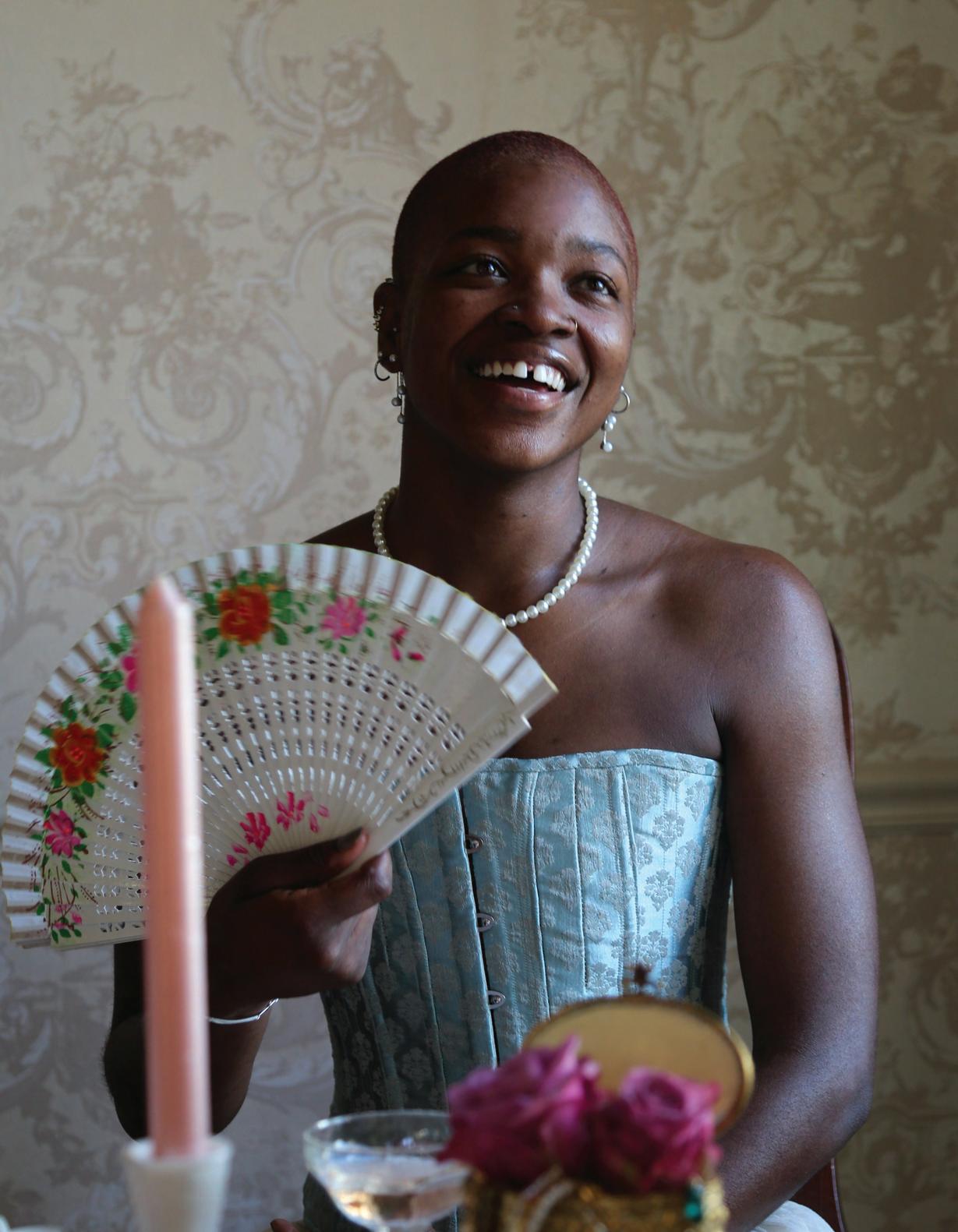
Dear Reader,
When Stephens Life started working on the theme for this fall, we agreed upon the Serendipitous Issue with the word Sacred on the back. We wanted to focus on the fortunate, unexpected moments in life and attribute those moments as sacred, entitled to reverence and respect. As the semester went on, we realized that Serendipity didn’t summarize our theme. We switched from Serendipitous to Hallowed. Though our issue has aspects of fortunate and happy moments, it also reflects the abrupt and unfortunate moments.
The Hallowed Issue epitomizes the unfortunate and fortunate while supporting matters such as traditions, history and heritage. From the manifestation of a childhood dream to the strive towards preserving culture amidst the destruction of a nation, the Hallowed Issue fights to integrate the duality and natural, inconsistent rhythm of life. As I enter my senior year of college, I reflect on the people I’ve lost from death or the ending of relationships, but also those I’ve gained, such as my cat Atticus.
This issue holds a special place in my heart, not just because it’s my first issue as editor-in-chief but because it summarizes the trials and tribulations of life. Sometimes you’ll work your butt off, and your expected result will not come to fruition. Sometimes you think of a far-reaching aspiration. Suddenly, it’ll miraculously fall into your lap despite barely praying or working for it. Yet, regardless if something works in our favor or not, to survive this unwarranted gift called life, we can only accept what’s not in our will.
We didn’t ask for or choose our socioeconomic status, race, sexuality or gender. Yet, we accept the identities we were given and with that create a framework of art and beliefs. Reader, wherever you are in life, whether it’s in turmoil, contentment or mediocrity, I want you to fully embrace the state you are in and search for the sacredness in chaos, comfort and confusion.
Your Editor-in-Chief

1200 E Broadway Columbia, MO 65215
Stephens Life is the award-winning student-run magazine of Stephens College.
EDITORS
Editor-in-Chief
Jordan Davis
Creative Director
Amanda Coppeti
Social Media Director
Daniela Saenz-Quintana
Copy Editor
Madison Marlow
Styling Director
Emilee Frasier
STAFF
Ashlynne Sage
Jamie Smallfield
Jo Douglas
Margaret O’Malley
Olivia Johnson
Sarah Phillips
Shannon Jones
ADMINISTRATION
Adviser: Wilson Minshall
SPECIAL THANKS
President Dr. Dianne Lynch
Dr. Bethanie Irons
Screen Queens Print Shop
Opinions expressed are not necessarily the views of the college, students, administration, faculty or staff. Stephens Life strives for accuracy. To report a correction or clarification, please send an email to stephensmagazine@gmail.com.














Iwas paying my own bills, having happy hours with my coworkers, helping my parents with rent and had recently adopted a new Shih Tzu. My older brother and I lived together, and we decided to name the dog “Celso” (think of an old-fashioned name, like Oswald).
After another long but fulfilling day of working eight hours in front of my MacBook, it was finally time for bed. Everything at this point had been normal, and what came the next morning was nothing I could have prepared myself for. When I woke up, everything about my perspective had shifted. It was September 8, 2020 and I had woken up sobbing. I had dreamt that I became the best soccer player in the world, playing for my favorite team. I was on the cover of magazines, and everyone knew who I was. At first, it felt like a dream come true. But then, it turned into a nightmare, touching on one of the deepest wounds in my life, one that still hurt.
When I was four years old, my father gave me a birthday present that, according to my family, made me smile more than anything ever had: a soccer ball. From age four to 13, soccer was a part of who I was. My father and my middle brother taught me my first steps in soccer. Like any good Brazilian child, my brother always had one certainty: “When I grow up, I want to be a professional soccer player.” Motivated by his passion, he would practice after school on the street where our grandmother and great-grandmother lived. With only two years separating us, I would always join him. We’d play until after the sunset, playing and eventually hurting our knees on the gravel road.
As the years passed, we both joined soccer clubs to improve our technique. Back then, women’s soccer was a huge taboo and barely existed for girls my age. So, up until I was a teenager, I was the only girl who trained with the boys. But when adolescence hit, girls playing soccer with boys was no longer acceptable in society’s eyes.
“Soccer is for boys.” “You’re going to develop a man’s body.” “Shouldn’t you take up a more feminine sport?”
When I was four years old, my father gave me a birthday present that, according to my family, made me smile more than anything ever had: a soccer ball. From age four to 13, soccer was a part of who I was.”
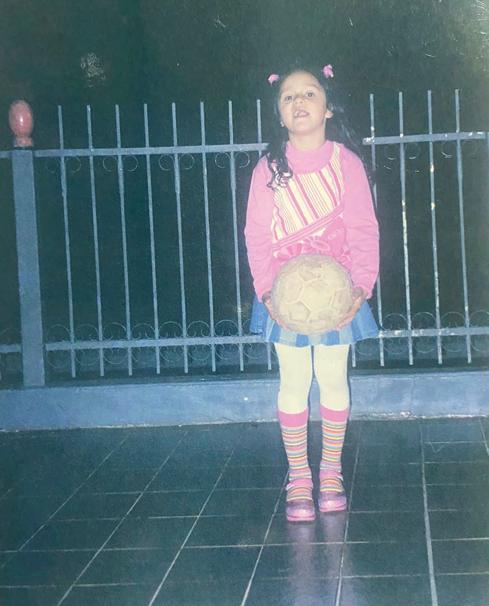
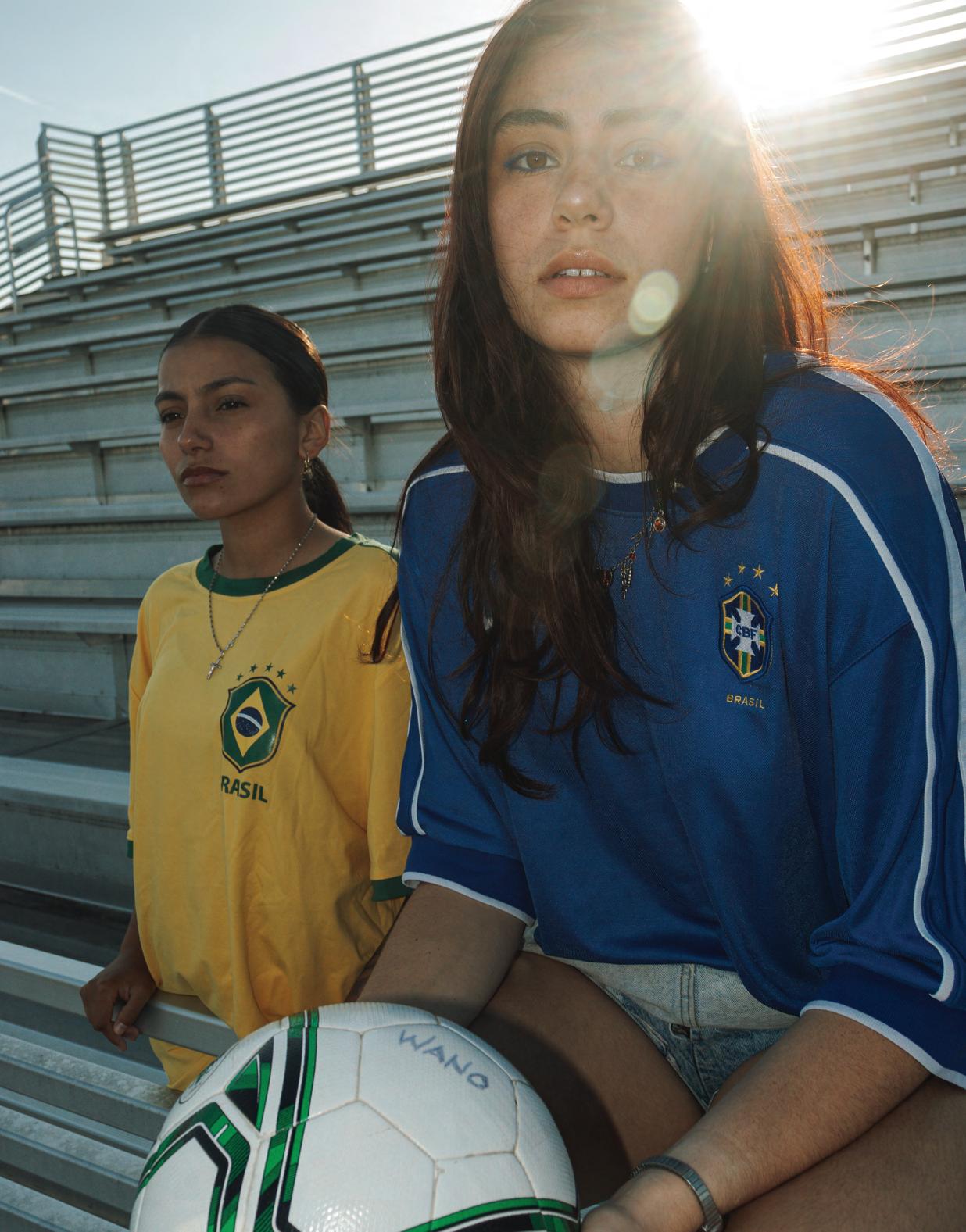
I still remember hearing these quotes from friends and even some of my aunts. Over time , those whispers became deafening, and my fear of not fitting in with society’s standards took over. Around the age of 13, I decided to quit soccer and join the volleyball team instead. I’ve always had a natural talent for sports in general, and volleyball was no different. In no time, it became a passion of mine — or perhaps just a refuge for my need to stay active. But it was too late. I knew I would never be good enough to have a volleyball career; it was just a hobby.
Before I knew it, it wa time for college entrance exams and a transition into adulthood. I did everything by the book: passed my exams with good scores, enrolled in the best university for advertising in Brazil and pursued a career in advertising. During that time , soccer remained in my life as a hobby, something I’d play every two months in pickup games with coworkers or watch on the TV with my family. After that fateful night on September 7 , I had a heartbreaking morning. That dream had awakened an inexplicable feeling in me. I couldn’t help but spiral around the questions of, “Why did you give up on that dream? Why did you let others’ opinions influence you back then?” That’s when I decided to post a video on Instagram’s IGTV (aka Reels). I rarely exposed
myself like that on Instagram, but I felt an overwhelming need to vent, hoping it would bring me some peace. The amount of love and support I received from that video was overwhelming. But one comment stood out and changed my life to this day. A high school friend commented, “You can still play college soccer in the United States and get a scholarship to live there!”

Playing soccer and studying abroad sounded like the perfect combination—two life goals in one. However, I knew that to make this dream come true, I would have to turn my life upside down and
give up many things. From that moment on, my routine became a balancing act: I was working full-time, studying English for the Test Of English as a Foreign Language (TOEFL) proficiency test, training soccer twice a day and going through physical therapy. Yes, imagine going from not practicing any sports since you were 16 to suddenly wanting to become a high-level athlete again. My physical therapist and personal trainer bills were not cheap. On top of that, I was also contacting college coaches in the United States. In April 2021, I started receiving replies with scholarship offers. I still remember the chill on my spine from receiving those emails — it was a mix of happiness, nervousness and anxiety because I knew there was no turning back.
After carefully considering the options , I made my decision. Soon, I was applying for a student visa to study graphic design and play college soccer. The entire process felt like a and before I knew it, it was time to say goodbye to the life I had known. Goodbyes are never easy, especially when you know you won’t return for at least four years. Leaving behind my friends, my family and everything that had been my reality was the hardest part. But I was ready to set out on a new chapter.
Around fall of 2021, just as COVID was no longer rocket science, I was finally able to board a flight to the United States. I was beyond excited to begin my soccer journey as a student athlete, however, on the third match of the season, an unfortunate play led to a torn ACL. The injury was devastating. I had to undergo knee surgery in a foreign country and spent almost 10 months in recovery, unsure of what would come next. To make things harder, my coach lost faith in my comeback and cut my athletic scholarship. This forced me to make a difficult decision—I needed to either find a new college to continue my studies and play soccer, or it was time to pack my things and head back to Brazil.
Shortly after, I received an offer from another college in Arkansas. It felt like a light at the end of the tunnel; or at least what I thought was the light at the end of the tunnel. Unfortunately, that light quickly dimmed after I arrived. The small, conservative town made me feel like I didn’t belong. I stuck it out for one semester, but deep down, I knew I had to move on. That’s when an offer from Stephens College came through. After some research, I felt like Columbia, Missouri, could finally be the right place for me. And when I arrived, I immediately felt at home. The people I met shared the same values and ambitions as me, and the environment was so welcoming that I felt I could truly be myself in all aspects of life. It was as if all the pieces of the puzzle were finally connecting.
Looking back, I’ve come to realize that not every path needs to be planned. Younger me followed a script, but life has a way of flipping those scripts when you least expect it. Since starting at Stephens College, I’ve learned to embrace the unexpected. I still face challenges every day, and as an international student, I constantly push my limits and overcome new obstacles. But what I’ve taken from this journey is that it’s okay to let things unfold naturally.

Am I living the dream I imagined? Maybe, or maybe not. But I’ve learned that life can take you in directions you never planned for, and that’s part of the beauty. I don’t have a roadmap anymore, but I’m still just as passionate and determined as ever. Now, I like to think that intuition is my future self showing me the way forward, knowing that what matters most isn’t the plan—it’s the passion you carry along the way. SL


Like most Black women, hair is one of my top priorities. I have skipped meals to afford my upcoming hair appointment, sat in salon chairs for half a day and panicked in public bathrooms because the rubber band was too weak to handle my thick coils. Some will say I’m vain. Yet, most Black women know the fear of stepping out into public without their hair tamed and relaxed from its wildness. Most Black women know the fear of their hair being called nappy— a derogatory term referencing the frizzy texture of cotton picked by enslaved people. For Black women, having a bad hair day is risking the chance of facing discrimination or reliving their younger days when ignorant schoolboys would humiliate them in front of their peers. Hairstylists and companies specializing in black hair are aware of this, causing the inflated costs of hair products and styles.
Most Black college girls cannot afford interchangeable hairstyles, especially box braids, a hair-braiding style predominantly popular among African people and the African diaspora. Box braids have an extensive history and trace back to 3500 B.C. in South Africa. People braided different patterns to differentiate others from tribes and societal classes. When enslaved Africans voyaged to the Americas in 1526, hair braiding became a means of survival. Mothers braided grains of rice in their daughter’s hair to serve as sustenance on their way to enslavement. Women designed intricate braiding patterns to communicate with each other. Sadly, that practice was abandoned by most black women. For Black Americans, assimilating to white culture became a means of survival. In 1908, Madam C.J. Walker became the first black millionaire by creating the first
straightening hair formula and raising popularity over the hot comb — a metal device that straightens coarser hair. Things took a turn in the 1960s when Black Americans revolted against Jim Crow laws. The Civil Rights Movement ignited Black women to display their kinks and coils to reflect on their assimilation of Eurocentric beauty standards. Although Black women embraced their natural hair, box braids did not reoccur until the 1990s. The film Poetic Justice, released in 1993, became a staple in the Black community. With starry eyes, black girls saw the tiny braids adorned on Janet Jackson’s head. While the media portrayed Black hair as unattractive, this film defied the notion by displaying a hairstyle deep-rooted in Black culture that still possessed strength and beauty.
Shayla and Amya are both students at University of Missouri, Shayla majoring in communications with a minor in business and Amya majoring in animal science with a minor in biology. Shayla and Amaya own a hair styling business called Crown Reset which provides Black college girls with affordable hair care and hairstyles. In the words of Shayla, “Sophomore year of high school I did a big chop, cut all of my hair off. I had three inches of hair that was very coily. My mom said I was cute, my teacher said I looked cute. The hairstylist said it brought out my cheekbones but the boy who I liked and liked me, his first joke was that I looked like a little boy. I felt so shitty that day. I felt like the ugliest girl in the world.” Shayla continued. There was a time when I tried to overplay my femininity. My hair had to be long and big. As black women, we feel the pressure of overplaying femininity because we are not seen as feminine to begin with.”
In the words of Amaya, “I grew up in a household where I was told I was beautiful. I am black and have an african last name. My family made sure that I owned that part of myself because it was something I could not change.”
Black women are underrepresented in the media. Yet, when represented they are given Eurocentric hairstyles. In the words of Shayla, “Issa Rae is my inspiration. Before Insecure came
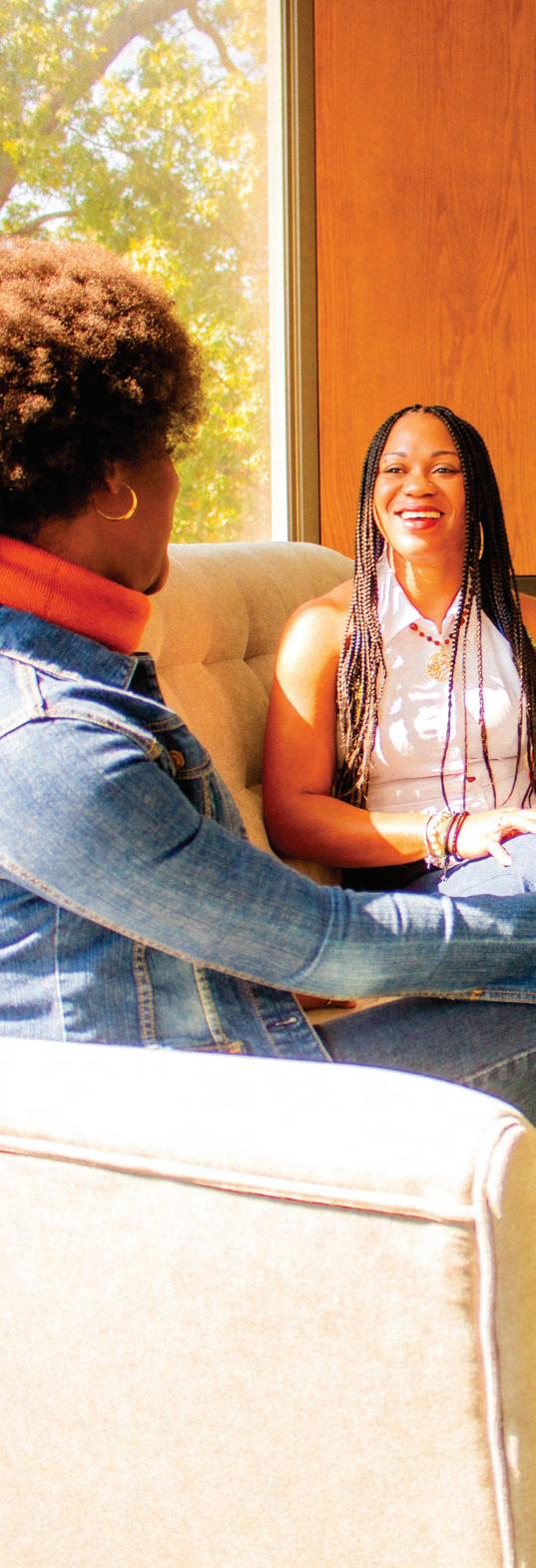


out, I went natural. She was pretty and everyone thought so too. My hair looked like hers and if people think she is pretty then I can be pretty too.”
In the words of Amaya, “I love my hair. My hair is a testament to how my life is. Sometimes you can put in the hours and work and it doesn’t turn out how you want. You’re not always going to have a good day. As nappy and tangled as it is, my hair should be ok. I shouldn’t have to look polished all the time to fit into society. If I feel like slicking it down, I’ll slick it down. If I feel like defining the curl, I’ll define the curl. If I don’t that’s okay.”
Amaya continued, “Yesterday, I had to prepare myself for the attention. At the end of the day if I know I look good and I feel good, this is how I’m going to show up in the world. I always tell people that it doesn’t help to make the majority feel comfortable because it teaches them something for you to show up the way you are.
In the words of Shayla, “When I wear my natural hair and walk around Columbia I have to prepare myself for the staring. People stare at beautiful things all the time. You are art. That’s what black women are, art and it’s art that the human mind can’t comprehend. Since the dawn of time, Black hair has been a means

of survival and expression. Most black girls sat in between their mother’s legs while she tightly twisted or braided the unruly irrepressible kinks and coils. As I write this story, I’m reminded of my mother, soothing my sore scalp with cool black castor gel which felt like a wet, sloppy kiss. As I grow older, I long for that bonding time I experienced with my mother that she also experienced with her mother, and so forth — a generational practice I hope will never break. Despite my mother’s hands now absent from my head, I do my own hair. If I have a daughter, she will sit between my legs with my hands interlocked in her hair. As I braid her hair, I will remember my ancestors, the adrenaline that coursed through their fingers, fervently braiding to survive. If have a daughter, she will sit between my legs with my hands interlocked in her hair. I will place the synthetic hair on her scalp, remembering my ancestors, the adrenaline that coursed through their fingers, fervently braiding to survive. SL


Our bodies are precious vessels. They nourish us, sustain us and keep us from harm. They experience pain, loss and unimaginable grievances. Thus, making room to express ourselves and these experiences in our nature. Whether it’s clothes or something a little more permanent, self-expression is important to our bodies and health. So why would you not want to honor your body with a little art, a little self-expression, a little tattoo? Kim Kardashian, an epicenter of fashion and fame, disagrees. She asks, “Honey, would you put a bumper sticker on a Bentley?” Why, yes, Kim, yes, we would. After all, maybe the Bentley needs a cute little bumper sticker to get its owner’s personality across.
To understand the function and culture behind tattoos, it is first important to understand the vibrant history behind tattooing as a practice. One which spans from the primitive dots and crosses of cavemen all the way to the modern intricacies we use to decorate our bodies.
Cate Lineberry for the Smithsonian Magazine notes that in 1991 the 5,300-year-old preserved remains of Otzi the Iceman were found in frozen wasteland of the Italian-Austrian border. The small dots and crosses decorating his body aligned with the pressure points of the body and seemingly relieved joint aches and pains. Ancient Egyptian women similarly had dots placed over their stomachs, believed to relieve the pain of childbirth. They also placed tattoos on thighs to offer protection from the goddess Bes during childbirth, despite the assumptions by male archeologists that these thigh tattoos denoted prostitution and low class. But how exactly were these tattoos done? Before tattoo guns and upscale, modern tattoo shops, archeologist W.M.F Petrie discovered that these dot and cross tattoos were done simplistically. He found a sharpened point handle used to create the therapeutic dots. Later he found bronze instruments with flattened needles , which
when tied together, created the therapeutic dots as seen on many of the tattooed bodies.
Today we often do not have specific reasons for getting tattoos. Our reasoning often boils down to a certain design looking cool or sentimental reasons that relate to our lived experiences. Modern medicine makes it so we don’t have to rely on tattoos for soothing pain and it is not common to get religious based tattoos to worship deities. So what prompts people to get tattoos in our modern society? Even further , what deeper meaning do they reflect to the person who has them? Three Stephens students share their perspective on the meaning of their tattoos.
KaLynn: “I feel like my tattoos reflect who I am as a person because they are unique. The biggest, most visible ones are symmetrical, it is so much more satisfying to look at things that are symmetrical in my opinion- it would make me feel off-balance otherwise. My tattoos are all black and white as well, they go with everything and don’t draw too much attention. Only one of my tattoos is meaningful. My thigh piece is a clematis vine and are the flowers my grandma had outside of her house every year. When she

passed, my mother and I both got them in memory of her. I got the rest of my tattoos because I just thought they would look good (and do).”
Shannon: “People may look at them and just think they’re simple, little doodles on my arm, but it’s more than that. They’re little timestamped memories. The heart on my wrist reminds me of when I went to a live show with my favorite Youtubers when I was 18. The mirror on my arm was when I let my cousin practice tattoos in his apprenticeship. The switchblade on the side of my wrist is a homage to some of the harder things that I had overcome in my 20s. They’re stamps of reflection.”
Rilla: “I think my tattoos really tie into me being a student. College is a time of self-discovery and finding out who you’re going to become, so my tattoos are a reflection of my journey. Not all of them will have a deep meaning but they will be a mark of who I was at that moment.”
It is useless to talk about tattoos and the vibrant culture around them without mentioning how tattoos funcion outside of our western world. Around the world, tattoos have an even more vibrant and culturally rich identity. Lineberry continues on the topic of tattoos with even more intricate descriptions of tattoos around the world. For example , de veloped over many years and practice, Polynesian tattoos
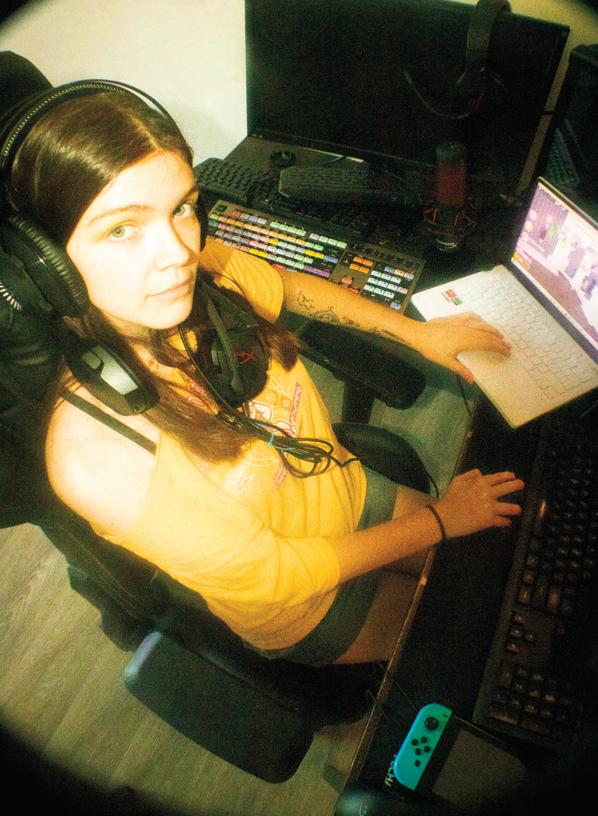
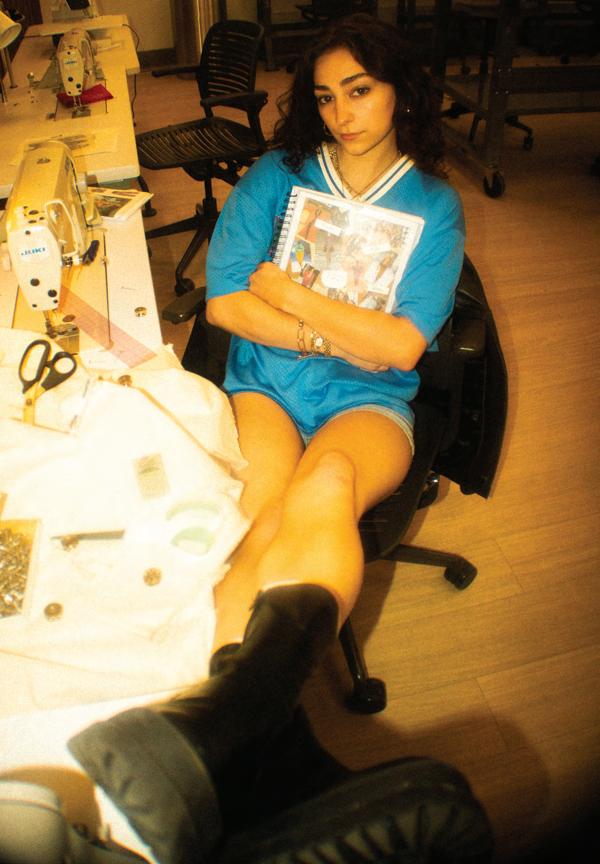


displayed intricate geometric designs meanwhile in Samoa, tattoo artists stick to their preserved tattoo practices, including the preservation of the original tools used. Japanese tattoos are world-renowned for their high intricacy and care, which includes traditional tattoos with vibrant colors.
Most notably, the Maori culture of New Zealand prizes face tattoos. The head is considered the most important part of the body and as such, the Maori people have face tattoos that reflect things such as their ancestry, status and any unique abilities which cultivates a sort of ID card imprinted on the face. The modern world we live in holds a lot of space for tattoos. Whether it’s the culturally significant practices outlined here , or something a little more individualistic, there is room for all of it and more in our ever changing society.
There are many different ways to experience getting a tattoo. Living Canvas tattoo artist, Nick Peters illustrates the process of getting a tattoo and how it is unique and tailored to every person along with sharing unique insight into his practice as a tattoo artist. How did you become a tattoo artist? Nick: “I became friends with tattooers as it has always been an interest of mine and I finally met the right people to put myself in a position to get an apprenticeship.” Do you have a specific type of
“Not all of them will have a deep meaning but they will be a mark of who I was at the moment.”
tattoo you specialize in?
Nick: “I particularly enjoy American traditional tattoos and I like to do black and gray illustrative style work too. Though, I’m also pretty versatile from learning how to do tattoos from the walk-ins.” What tattoos do you not do?
Nick: “I don’t like to do watercolor or what they call ‘trash polka’. I won’t tattoo minors or do anything gang related, hate speech related, homophobic, racist. Anything like that I will absolutely not do. My no list is kind of short but there are definitely some specific situations where I will say no.”
Could you walk me through how you would typically give someone a tattoo?
Nick: “The client would come in and either do a walk in style tattoo which would mean their tattoo would be done on the spot in a quick fashion with quick turnaround. Otherwise you would do a consultation and then set up an appointment after you both agree on a design, price and timeframe. The day they show up for the appointment you go over the design and they fill out state mandated paperwork. We would then get the stencils all laid out and put on the body with the correct placement. You would also need to prep and clean the skin prior to doing the stencil. After, you set up all your equipment and put the client in the proper position for both of you to be comfortable to achieve the tattoo. Then you do your thing for however long that takes, bandage them up and give them proper aftercare instructions and hope they come back.”
Tattoos can mean many things, whether they are cultivated to your life or come from a set meaning, they can convey great importance to the person getting a tattoo. The importance can act anywhere from being a mark of reclaiming a tragic, life-altering event or just being a mark of something you hold important. To gain further insight into this I ask for the greatest tattoo story from Nick’s practice that shows importance and most importantly, resilience from the client. Nick states, “A lady came in once and she was in a really bad vehicle accident. She got hit head on by a semi truck and was paralyzed with a traumatic brain injury and they basically told her she would never walk or talk again. One day she came in here by herself and booked a tattoo with me. She wanted to get a DNR or ‘Do Not Resuscitate’ in big fairytale letters across her entire chest. She was tough and had some real spirit about her, she was just amazing.” Illustrated below are more tattoos that reflect a meaning beyond skin deep.
One of the most empowering and reclaiming tattoos people get is the Medusa tattoo. This comes from the Roman version of the Medusa myth. Where Medusa, a priestess of Athena, is raped by Posideon in Athena’s temple. After the assault, Athena punishes (or in some versions) gifts Medusa with snakes to replace her hair thus, turning every man who looks at her into stone. The tattoo can take on many forms from small and traditional to expansive and ornate depending on the preference of the person getting the tattoo. To be clear, a Medusa tattoo does not just indicate a survivor of sexual violence. Seeing as sexual violence can take so much of your personhood and confidence, the tattoo shows reclamation over the body after someone so harshly took advantage of it.
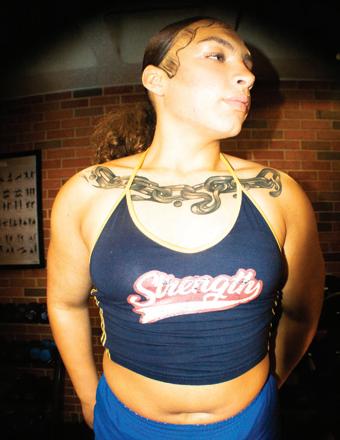
Miriam Webster defines a semicolon as a punctuation mark that connects two separate clauses of a sentence. In the tattoo world, the semicolon signifies that continuation, not of a sentence but of a person’s life. This tattoo is normally done in conjunction with past struggles of addiction, self-harm, or suicidal ideation. It signifies moving past the struggles that defined your past and moving on to a new “clause” or a new lease on life. The tattoo is normally small and placed more privately, normally as a reminder to the wearer of what they’ve been through and where they will go.
Unlike the other tattoos mentioned, butterfly tattoos do not always have a set meaning. They can symbolize anything from transformation; from an “ugly” caterpillar into a “beautiful” butterfly to something as simple as a mark of peace. This tattoo is an example of tattoos taking on their own personal meaning according to who is getting the tattoo. After all, if a tattoo is a means of expression, no two tattoos will be the same. As soon as a tattoo is on your skin it takes on a definition of its own. One without the constraints of what people think it should mean.

Tattoos are important pieces of the world around us. Though many would like to dismiss their importance , they h old a significant place in our history as humans. After all, hundreds of thousands of years ago a caveman, possessing a simple life and means, held the choice to get a simplistic tattoo to relieve his pain. Today, you hold the choice to walk to one of the many tattoo shops in your vicinity and choose any piece of artwork, no matter how insignificant, and place it on your body. Though you are not a caveman, you hold the same choice as a caveman. The choice to let ink permanently hold a place on your body. No matter what, tattoos will always take from our life experience and personality to create something truly unique and beautiful. Tattoos are much more than a “bumper sticker on a Bentley”. They are expression. They are creativity. They are little remnants of the world around us. Even Kim Kardashian ended up putting a bumper sticker on a Bentley with an infinity sign on the inside of her lip. So, ladies, and gentlemen, put the bumper sticker on a Bentley. Get the tattoo. You have nothing to lose. SL

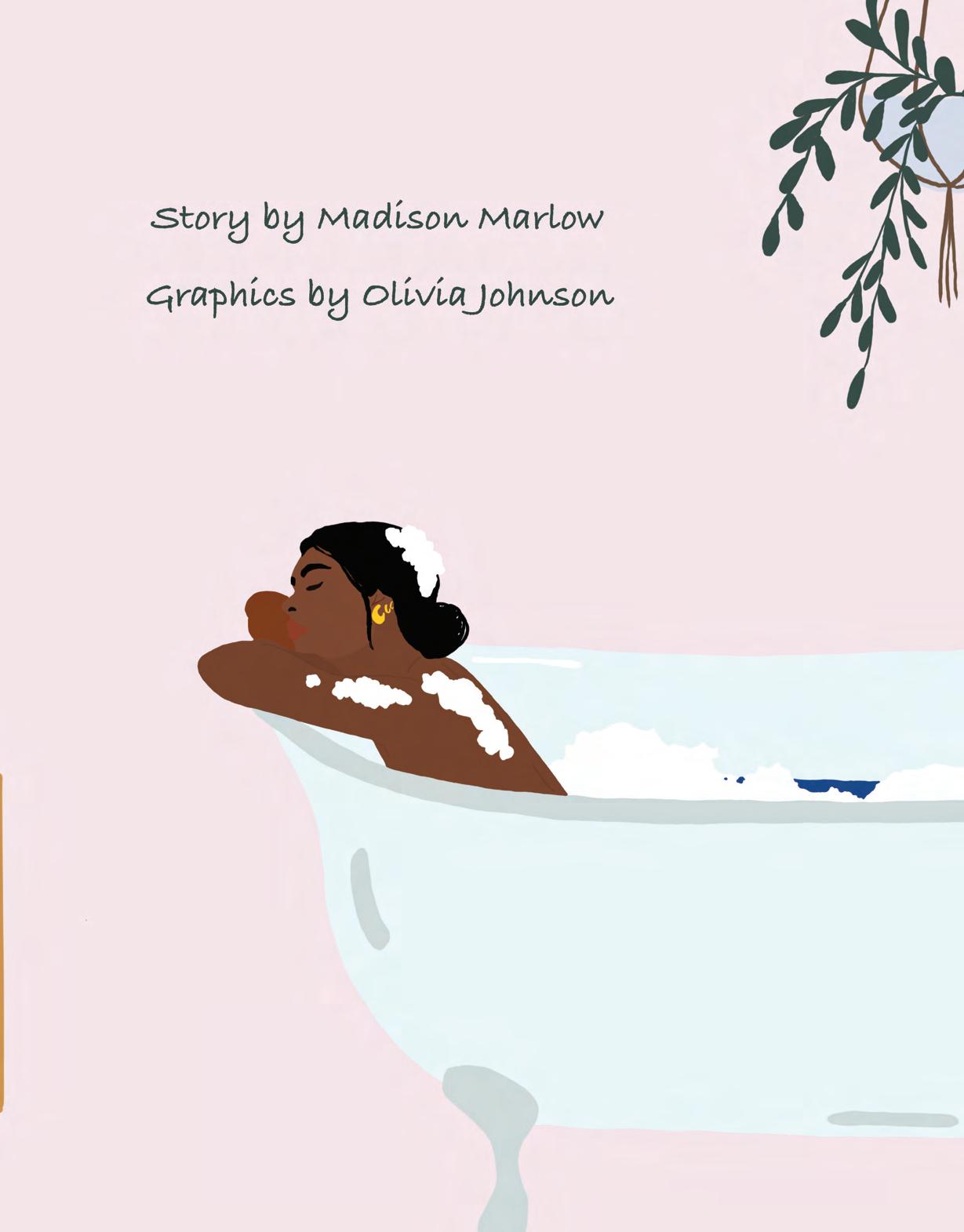
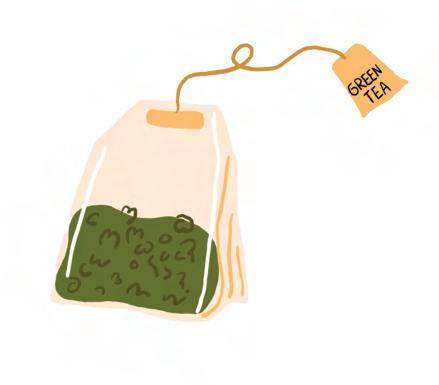
In a world that often feels overwhelming and fast-paced, there’s a profound comfort in our small everyday rituals. Whether it’s brewing that first cup of coffee in the morning, going about your normal skincare routine or taking a few minutes for meditation – these moments of self-care have become sacred to many. They’ve evolved from tasks to check off on a list to small acts that ground us when life becomes chaotic.

However, self-care is more than a modern phenomenon. Across the world, cultures have long embraced everyday rituals, turning ordinary routines into sacred practices that promote well-being and spiritual balance. In different cultures, each ritual is infused with meaning and fosters a deeper connection with themselves.
A ritual is any action or behavior that is repeated with intention. It is as simple as lighting a candle each night or as intricate as a full spiritual ceremony. The complexity isn’t what makes these moments special, but the intention attached to them. They provide comfort, structure and a sense of control – something we all crave.
In daily life, rituals have the power to ground us. Even the smallest, most mundane actions, like making tea, stretching in the morning or writing in a journal – can take on a different meaning when practiced with intention. These actions encourage a moment of pause for reflection and connection. In today’s hyper-connected world, where information is a constant bombardment, these moments offer a space to find stillness.
When looking at it from another perspective, the repetitive, everyday tasks can become sacred. They transform into small acts of worship that serve as a reminder that we deserve moments of peace, balance and renewal. These ideas are not exclusive to modern life. Throughout history, cultures across the world have recognized the importance of everyday actions. These actions serve as opportunities to connect with something deeper – whether it’s nature, community or the self.

Though self-care is a universal concept, its practice varies across cultures. What may seem like a simple routine in one part of the world can hold significant cultural or spiritual weight elsewhere.

In Japan, the practice of Shinrin-yoku, or “forest bathing,” has become a beloved form of self-care. Unlike what the name suggests, no water is involved. Forest bathing is silently spending time in nature, absorbing the sights, sounds and smells of the forest. This stems from the belief that nature has healing properties and that slowing down to connect with nature can restore balance.
Though it may seem like a walk in the woods, Shinrin-yoku is a sacred ritual. Participants are encouraged to disconnect and leave the demands of modern life behind, allowing the forest to provide its healing. It’s a perfect example of how an ordinary activity can bring peace and a deeper connection to the natural world.
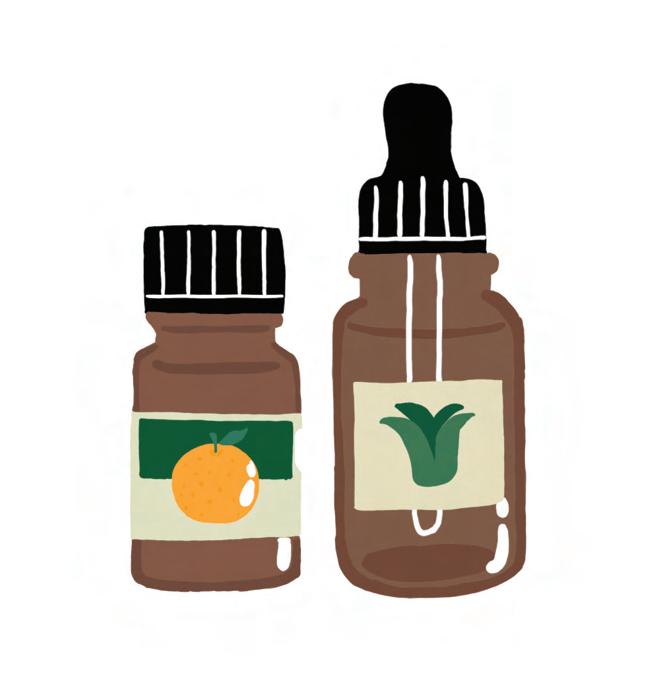
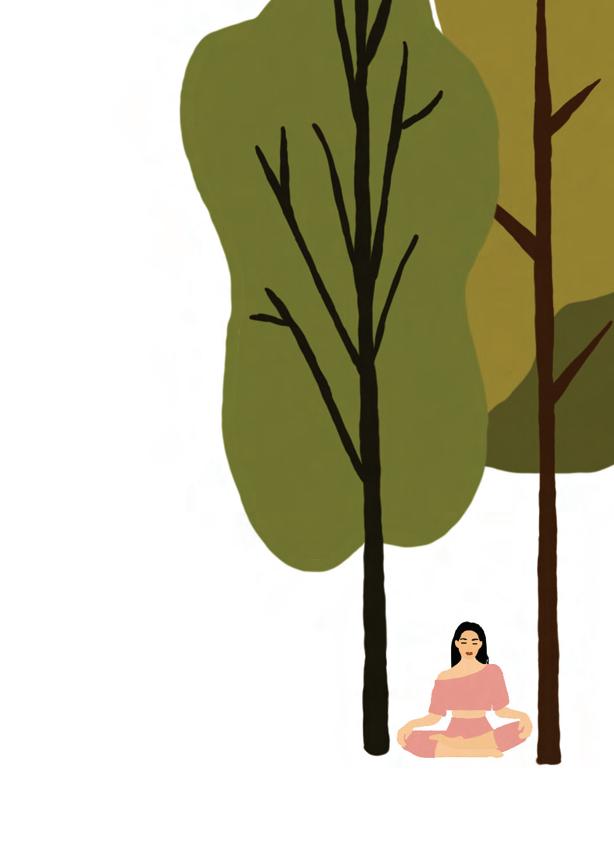
In India, the daily self-care practice of Abhyanga, or self-massage with oils, is an integral part of Ayurveda, the ancient system of medicine. This ritual isn’t just about physical care – it’s deeply connected to internal healing and balance. By massaging warm, herb-infused oils onto the body, individuals engage in a form of selflove that nourishes the skin and promotes circulation. The ritual also strengthens the mind-body connection, reinforcing the idea that health is sacred.
For many in India, Abhyanga is a daily ritual, often performed before bathing. It’s a moment of mindfulness and self-awareness, transforming the ordinary act of skincare into something deeply spiritual.
There is a popular self care routine that embraces the ultimate comfort and relaxation: Kalsarikänni, which roughly translates to drinking at home in your underwear. While it may sound silly or even worrisome, the concept of Pantsdrunk is rooted in the Finnish cultural values of authenticity and comfort. It’s about embracing yourself in the most relaxed and unfiltered way possible without pretense.
The beauty of this practice lies in its simplicity. It doesn’t require luxury candles, expensive face masks or any kind of material excess. Instead, the focus is on being comfortable and enjoying your own company. Whether that means watching your favorite show with a glass of wine or curling up with a cozy blanket.

The tradition of fika revolves around a simple ritual – a coffee break. Fika isn’t just about grabbing a cup of coffee and heading back to work. It’s a deliberate pause in the day, to connect and restore. Twice a day, many workplaces from the upper ranks to the interns, take part in fika. People gather around to drink coffee, eat a sweet treat and chat.

The concept goes beyond mere caffeine consumption. It’s about the idea of “collective restoration,” where people are encouraged to step away from work, to relax and engage in meaningful conversations. Though brief, This kind of break can have many mental health benefits that enhance well-being and productivity.
As globalization and technology have spread cultural practices across the world, many ancient rituals have found new homes in modern life. People everywhere are beginning to recognize the value of sacred rituals, embracing global traditions of self-care and reinterpreting them in their own ways.
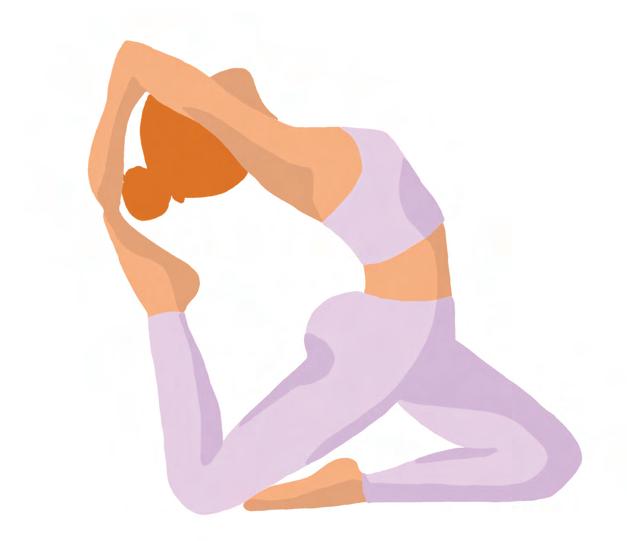
For example, yoga, which originated in India as a spiritual practice, has become widespread in Western society as a form of self-care. While it’s often viewed as just a physical exercise, many practitioners use it as a form of meditation, relaxation and even spiritual connection. Likewise, practices like aromatherapy, mindfulness meditation, and even skincare routines have taken on new meanings, blending ancient wisdom with modern life to create new forms of special self-care.
As more people prioritize their mental and physical well-being, these rituals are gaining popularity. Many are learning to create their own sacred spaces at home, incorporating practices from around the world that help them feel grounded, peaceful and restored.
Rituals, particularly those rooted in self-care, have a powerful impact on our mental and physical health. Engaging in regular, meaningful rituals can reduce stress, lower anxiety, and promote mindfulness. Whether through meditation, a skincare routine, or a simple coffee break, these moments allow us to slow down, breathe, and focus on the present.
Rituals also play a crucial role in our sense of identity and belonging. In many cultures, these practices are tied to traditions passed down through generations,
giving individuals a sense of continuity and connection to their heritage. When self-care is linked to cultural or spiritual traditions, it becomes even more meaningful, reinforcing a sense of community and shared experience.
You don’t have to travel the world to experience the sacredness of everyday rituals. Instead, you can incorporate simple practices into your daily routine that bring meaning and balance. Consider starting your day with a mindful stretch or meditation, taking time to prepare meals with intention, or transforming your nightly skincare routine into a calming ritual.
The key is to approach these actions with mindfulness. Instead of rushing through them, pause, breathe, and recognize them as acts of self-love and care. By doing so, you can turn even the most ordinary tasks into moments of restoration and connection.
In a fast-paced, often overwhelming world , it’s easy to overlook the sacredness of our everyday routines. Yet, when we slow down and approach these rituals with mindfulness and intention, they become more than just tasks — they become opportunities for self-care, reflection, and connection. From Japan’s forest bathing to Finland’s Pantsdrunk, these rituals remind us that the ordinary can be sacred. By embracing the global tradition of everyday rituals, we can find peace, balance, and meaning in the simplest moments of our lives. SL


Barcelona is known as a cultural melting pot because so many people with different backgrounds call it home. This term symbolizes the way people came together to build Barcelona into the city it is today. You can see all these beautiful touches through its various art forms. From the vast architecture, countless Fresco paintings, and traditional Spanish music and dance. So much of Barcelona’s culture is shown through these arts.
The Sagrada Familia, the largest unfinished Catholic church, is one of the best examples of how Antoni Gaudi brought their culture to life through architecture. He designed this church with gothic features and architectural elements that expressed Barcelona’s culture at the time. Similar to Pablo Picasso with artwork and Joan Manuel Serrat with music, these creative outlets brought Barcelona’s style, passion, and culture to others around the world. As cultures are often preserved through food and dance, these traditional forms of art have also been used to bring awareness to political and social issues. Flamenco dancing is tantamount to this practice.
Learning a new language may be hard. But have you tried living in another country while trying to learn their languages and taking 15 credit hours in college? Studying abroad is filled with many beautiful experiences and various ups and downs – all while discovering yourself and other cultures. I had the opportunity to study abroad in Barcelona, Spain last spring , and it was the best decision I ever made. I learned so much during my time in Spain from how to navigate public transportation daily to how to push myself to my fullest potential when it comes to my work. The material expense of this experience could never amount to the priceless memories it provided me with. Barcelona is rich in culture and beauty. There is a story in every piece of architecture, every painting, even in the metro stations. The city is vibrant year-round and embraces change like the moon.

Flamenco is a Spanish music style that is played on the guitar and accompanied by singing and dancing. It originated in Lower Andalusia in the 18th century but wasn’t a very public dance until the 19th century. It was a celebration among families and work settings. Flamenco started as a song while people worked. It was an “in the moment” expression. Tablao de Carmen said it was, “The individualistic and rebellious personality of the Andalusian and the gypsy and their adverse social circumstances, in the face of injustice and despair, lead them to liberate themselves through singing, expressing their sorrows and joys.”

Flamenco truly originated from the heart and soul of the performer. It is an expressive dance that commemorates one’s feelings and passions through song. Tablao de Carmen calls it a “Philosophy of life” because the dance is dependent on the creator. The creators themselves have no boundaries since Flamenco has no boundaries. The possibilities of this art form are endless.
Today, Flamenco is seen everywhere in Catalonia from cafes to theaters and public streets. It is a lifestyle that is meant to be shared with others. When I was in Spain, I had the opportunity to see a theater performance, observe it in the streets, and take a Flamenco dance class. The dance is beautiful to see as you can truly feel the passion that it expresses.
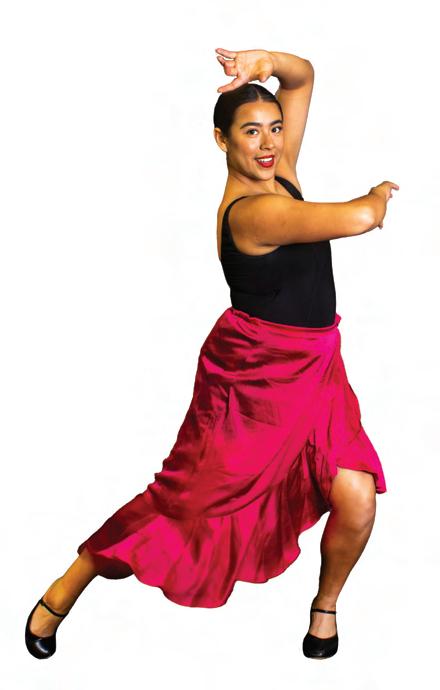

I was lucky enough to witness Tablao de Carmen, the only show in Barcelona that offers guests food and drink during the dance. This show was fantastic. There was a singer, a guitarist, and three dancers. The best street performance I saw was in Sevilla at Placa de Espanya when I was on a weekend trip with some of my friends. It was beautiful and even more passionate than the theater showing. It felt raw and real as you could see the women’s sweat pouring down their faces as they were feeling the music in their souls.
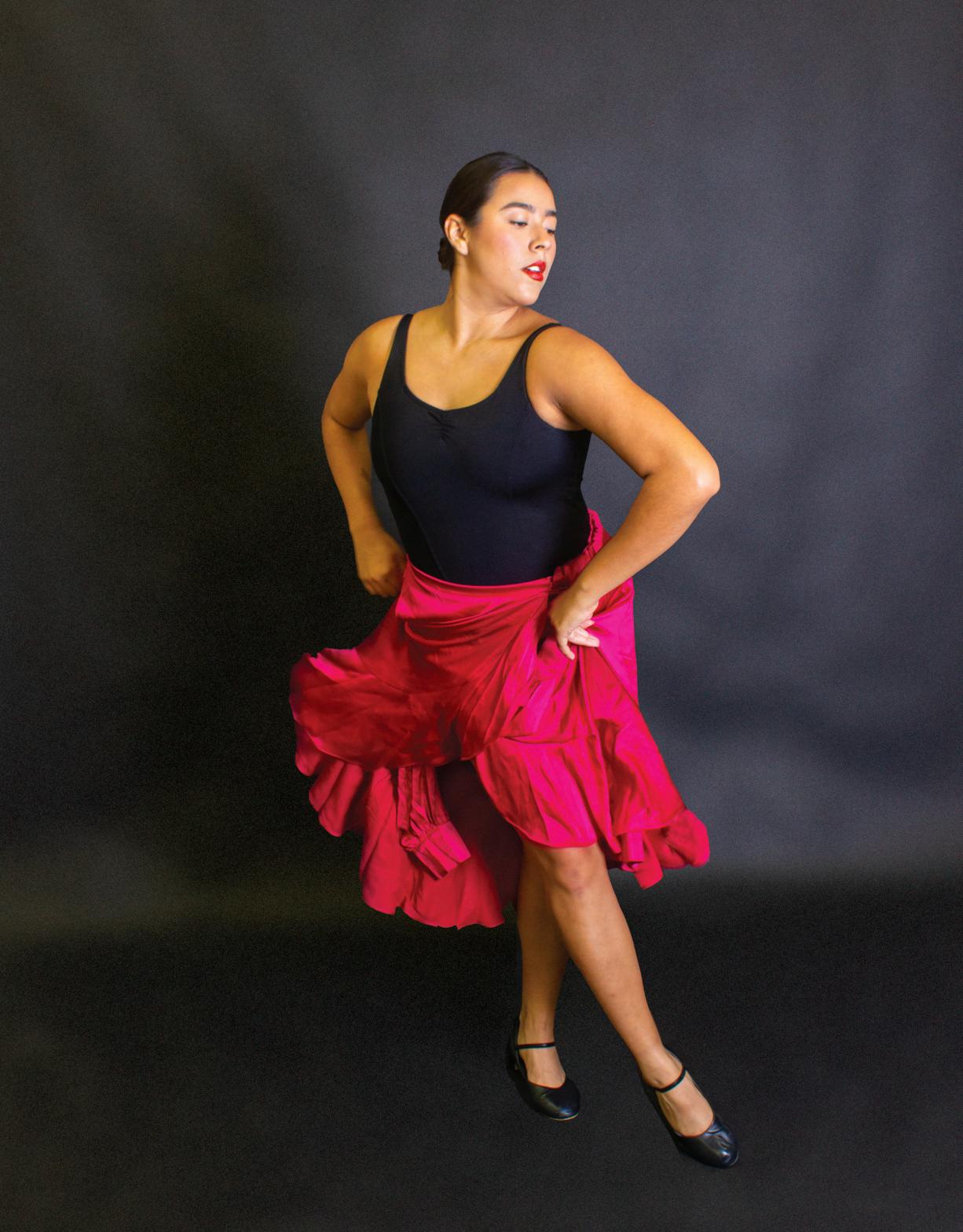
The dance class was offered through my study abroad program. It was taught at Escuela de Baile Flamenco Jose de la Vega by Ainhoa Garcia. Though this was out of my comfort zone, I had a blast. It was a small class of five so we got to learn from Ainhoa and she taught us the different moves.
Ainhoa has been teaching flamenco dancing since she was 15 years old. She chose this art form as her way of life early on. When she was 4 years old , she saw someone dancing flamenco and told her mom that’s what she wanted to do. When I interviewed her, she talked a lot about how flamenco is her passion. She thanks God daily that she gets to do what she loves for work, as most of us don’t. She fell in love with the dance and music, which is a very important symbol of her country. Ainhoa loves having this deep connection to her culture. She said, “I’m very grateful for my life. At the end of the day, I can work and share my passion, my art. That’s very important, I feel it a lot. Believe in that feeling! Then transport [the art] to other countries and other people.”


Barcelona, Spain is full of passion and history. Visitors can see this through the various art forms produced in the beautiful city. Flamenco dancing is just one art form that is very special to Spain’s culture. This dance still inspires today and is a way of living for many. Spaniards work to live, not live to work like many Americans. Outsiders can feel this passion for life and the beauty one’s life can bring when visiting. The heartbeat of Flamenco lives in the city and its people. Barcelona became my second home in just four months. Imagine where life can take you when you stop listening to your own heartbeat. SL

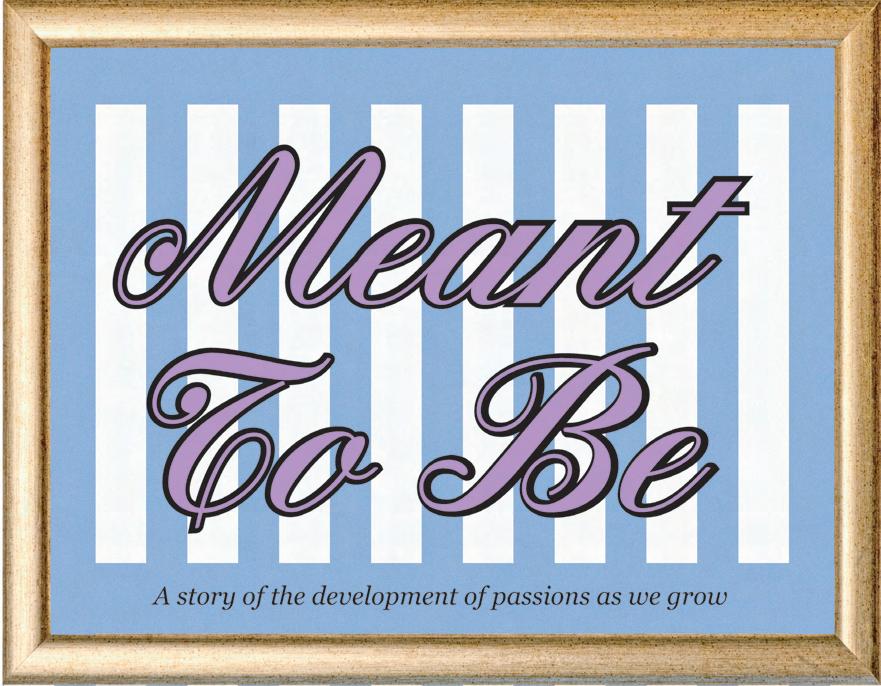


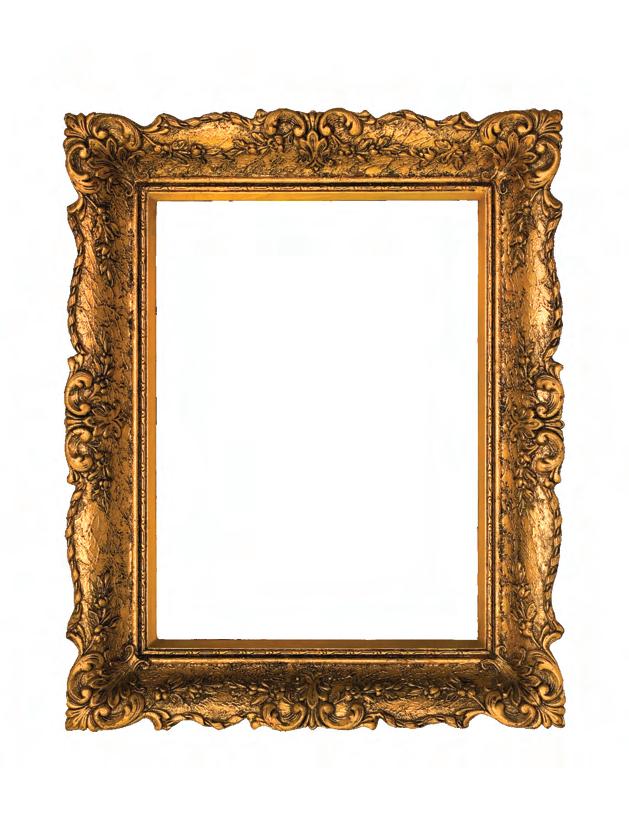


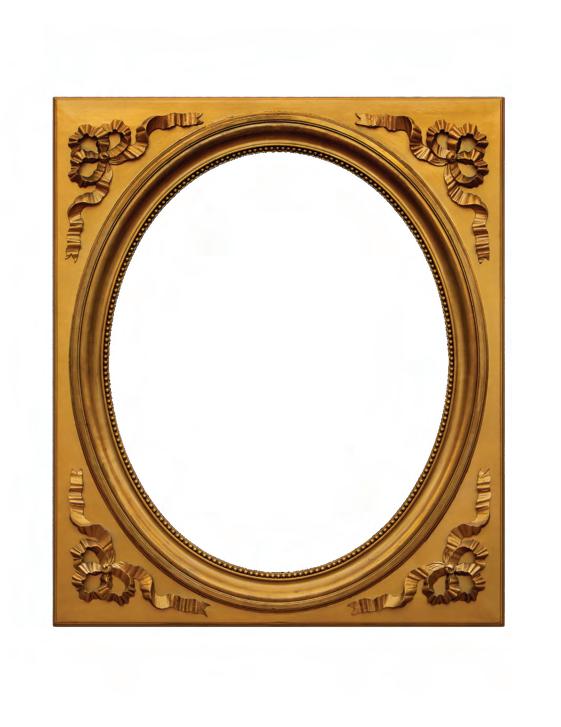






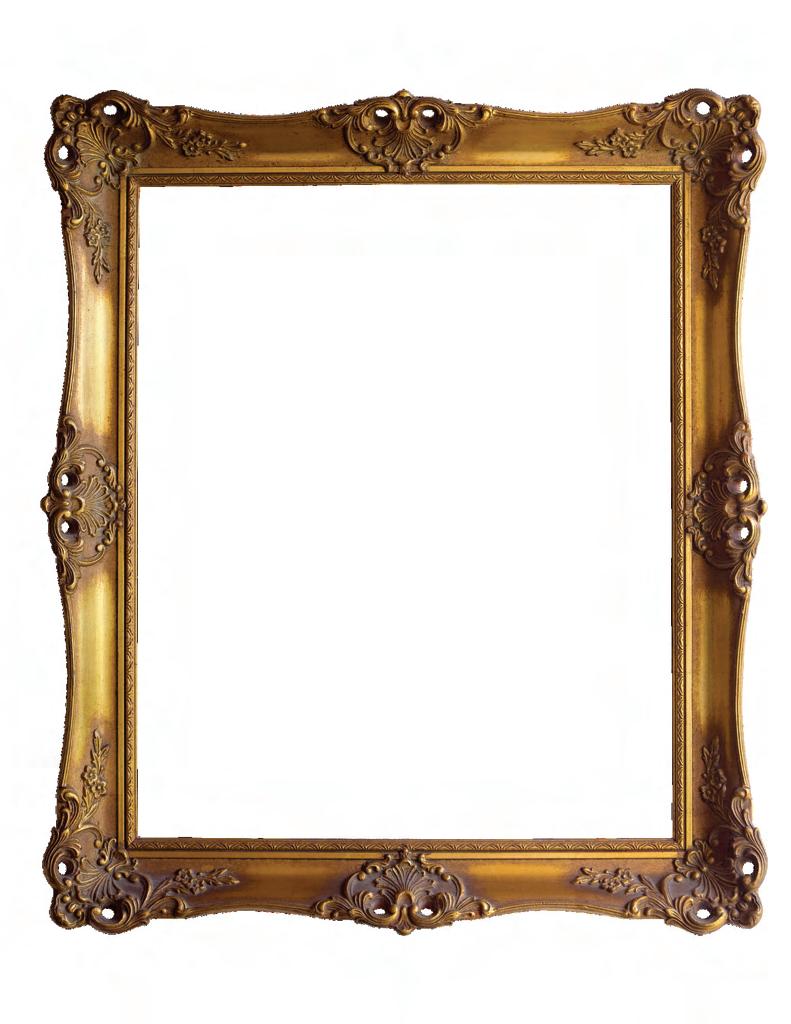

To hear this story scan the QR code




Palestine encompasses the Gaza Strip and West Bank, including East Jerusalem. Palestine, the homeland to Palestinians, is absent from the map. In 1917, British forces captured a predominantly Arab region known as Palestine from the Ottoman Empire. The British forces wrote the Balfour Declaration which urged persecuted European Jews to join the Jewish minority living in Palestine.
By 1947, the United Nations presented a plan for both a Jewish state and an Arab Palestinian state. By 1948, the British fled and the state of Israel was created. Palestinians refer to this day as the Nekba which translates to “catastrophe.” Over 700,000 Palestinians became refugees. Since 1967, Palestinians have been fleeing territories taken by Israel. Israel continues to build settlements in the West Bank while Palestinian territory is disappearing on the map. Israel Defense Forces continue to destroy homes and settlements while also removing access to water and natural resources. What was once historical Palestine is now mostly consumed by Israel. Despite Palestinians always living under the oppression of Israel, the beauty of their culture remains.
Tatreez is a form of traditional embroidery. Stitched without a frame, the needle goes in and out of the fabric in one motion. Pearl cotton is the preferred thread due to the subtle sheen and durability. This embroidery technique has been passed down from generation to generation. When displaced from their home in 1948, women wore their embroidered designs to honor their heritage.
Dabke is a traditional Palestinian dance. Accompanied with singing and wind instruments, dancers stand in a straight line, clasp hands and jump then hit their feet on the ground. Dabke roughly translates to “stomping ground.” Palestinian scholar, Abu Hani, is famously known for saying, “When we stamp our feet, we are saying that no matter how far we have been scattered, Palestine will always remain under our stamping feet.”
The art of cooking is cherished in Palestinian culture. Signature dishes include musakhan, maqlubah, mahshi, and knafeh. Despite the restriction of produce in Palestine, Palestinians across the diaspora cook these meals to preserve their culture.
In Palestinian culture, the olive tree represents a symbol of nationality and connection to their land. In the Israeli-Palestinian conflict, several olive trees have been demolished. The olive tree is a reflection of Palestinians’ fight for their land — olive trees undergo caustic conditions such as drought and poor soil. Yet, these trees remain secured in their place. Olive trees are inherited over several generations, which validates Palestinian history. In every Palestinian House, olive oil is stored in jars. Their ancestors harvested and tended to crops. The jar of olive oil is not just an ingredient for meals but a reminder of their ancestors and a symbol of resistance.
Amidst the genocide in northern Gaza, the beauty and culture cherished by Palestinians gets lost in the current horror. Despite the bombing of their homes, Palestinians still stomp their feet and dance. Refugees stitch pearl cotton, creating embroidered art. Like the people of Gaza, olive trees have become casualties of the ongoing war in Gaza. The death of these trees is a reminder that the innocent and vulnerable are offered no regard or protection. The official number of Palestinians killed exceeds 41,000. Through this war, there has been an end to generations, the loss of ancestry and culture. Yet, the untamed voices in the West will not allow the extinction of Palestinians and their culture. From the River to the sea, Palestine will be free. SL


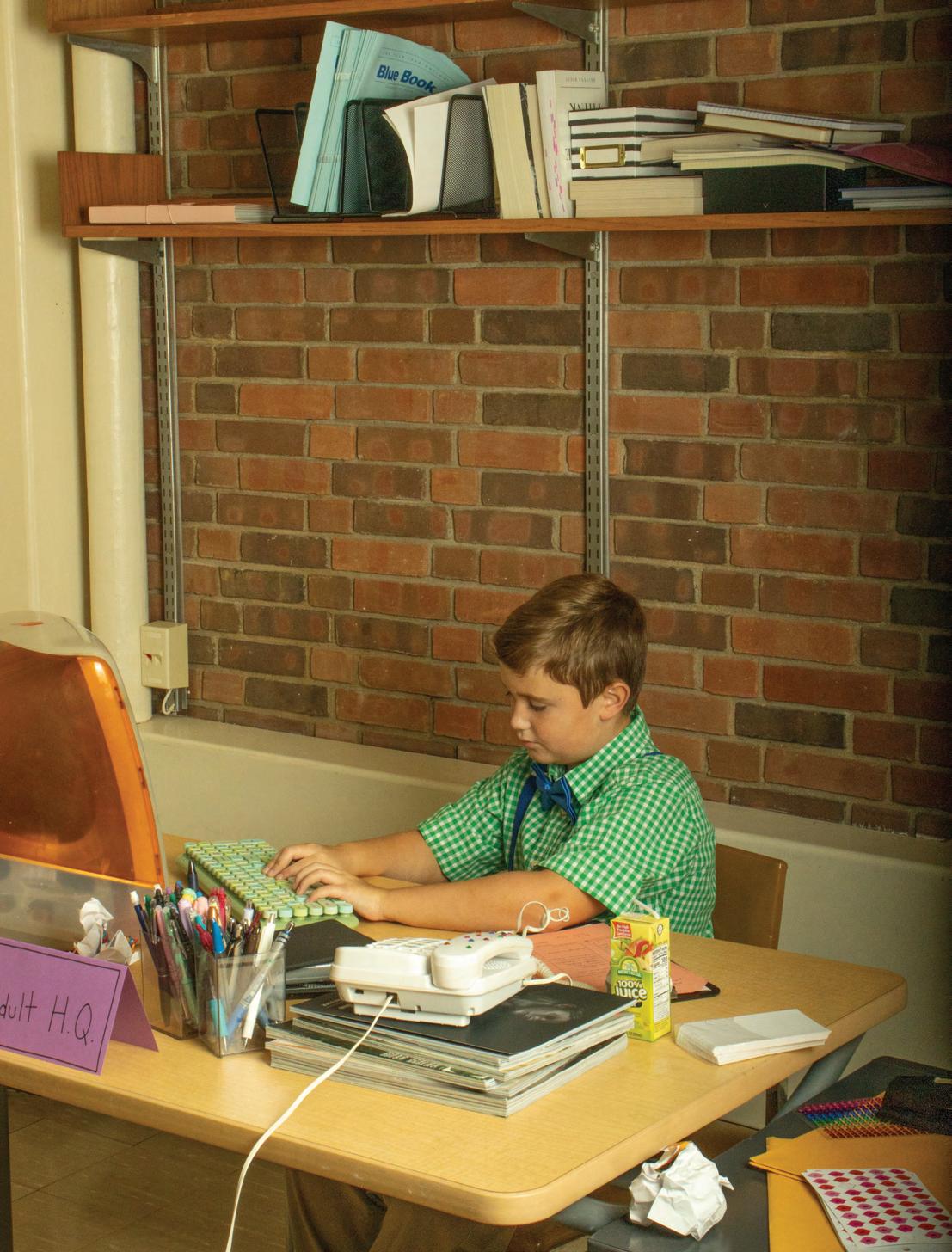
People tend not to view the youth as wise – yet, it is in these stretches of our lives in which we draw our greatest insights: our childhood forever impacts our character and choices, from adolescence to adulthood. I have four younger siblings, all under the age of ten. Oftentimes I am taken aback by the things they say, how much they understand and how much they retain from previous conversations. I love hearing their advice after they eavesdrop on me venting to my mom or dad; it’s always so simple, so sweet and so unequivocally honest. My own experiences with the wisdom of youth is why I have decided to bring this story to life. I wanted to interview those at the beginning of their education and those nearing the end (or an ending). So, I presented the same three questions to two different groups of students: undergraduate students attending Stephens College and elementary school children from ages 9-11. Whether their words make you chuckle, smile or think back on your own experiences, I hope they bring some joy into your life. And without further ado, our cast:



Josephine Dalton is a 21 year old apparel studies major. She has a passion for listening to and playing music. Josephine is one of the featured models for this piece!
Abigail Hatfield is a 22 year old integrative human biology major. She loves to crochet, journal, travel. Abigail also does volunteer and activism alongside school and hobbies.
Asher Wilson is a 10 year old fifth grader who attends Stephens College’s own children’s school! Both his mother and father teach on campus. He loves music and to dance. Asher also did his part by modeling for us.
Isabelle Douglas is a 9 year old fourth grader and my little sister. She plays basketball, does cheerleading, and loves to spend time with her family. She is a very active and busy girl.
“What makes you happiest?”
Josephine: “I think… music and laughter.”
Abigail: “Honestly, being in an environment that I cultivate for myself and especially one surrounded by things I love.”
Asher: “Getting home from school and seeing my mom and dad.”
Isabelle: “Hanging out with my family.”


“If you could change one thing in the world,
what would it be?”
Josephine: “Ignorance, because there’s really a surplus.”
Abigail: “Inclusivity is definitely a big thing, as well as open-mindedness. There’s so many things that I feel like could be changed.”
Asher: “World hunger!”
Isabelle: “We don’t have to do chores anymore or go to school!”
“What is the best advice you’ve been given?”
Josephine: “Just slow down. I don’t have to always be doing everything full throttle and so fast. Good things happen in peace.”
Abigail: “Probably from my sister, ‘Don’t take life too seriously, because none of us are going to make it out alive in the end.’”
Asher: “Great power comes with great responsibility.”
Isabelle: “In basketball, when I did something wrong, I could always [get better]!”



Coming into this piece, there were already expectations and assumptions I made about how people would answer. However, what I received pleasantly surprised me. The adults took their time to respond: they wanted it to mean something, and they understood they had an audience. Each time they answered, it was thoughtful and interesting – Josephine was more direct, and Abigail had a lot to say. Meanwhile, the kids answered honestly and without much hesitation. They jumped to give their own wisdom in, quite possibly, the most precious way possible.
Having the chance with these four lovely people was an amazing experience. I feel honored to have been able to sit and interview them for this story, and to hear their answers to these questions. Even if the questions were simple, I feel that I will carry their words with me for a long time. Each of them had something unique to bring to the table, new outlooks and beautiful personalities. I hope that Josephine, Abigail, Asher and Isabelle brightened your day in some way and that you also carry them with you. SL




Imagine this: you’re floating on a cloud. Everything below you — your stress, your worries, your need to have it all figured out — is distant and fading away. That’s what letting go feels like. And sometimes, it’s the best thing you can do for yourself. We all feel the pressure to control every aspect of life — whether it’s school, your career, or even the way others perceive you. But trying to hold on too tight? It’s exhausting. You end up stuck, tethered to your worries, unable to breathe. Letting go is like sinking into soft clouds, giving yourself permission to drift a little, and trusting that life will guide you where you need to go.
From a young age, we’re told that success is about hard work, planning and, most of all, control. Control over our grades, control over our future, control over how people see us. The more we try to maintain that control, the more pressure we put on ourselves. But as many people have learned, both spiritually and psychologically, control can be an illusion.
In reality, life is messy, unpredictable and rarely fits into the neat little boxes we’ve created for it. And that’s okay. You don’t need to have everything figured out all of the time. Sometimes, letting go of that illusion of control is exactly what you need to move forward.
Letting go is often misinterpreted as giving up, but really, it’s more about learning to trust — trusting yourself, trusting the process, and trusting that things will fall into place, even when you can’t see how. It’s allowing life to unfold without trying to force every piece into place. This doesn’t mean you shouldn’t work hard or have goals, but it does mean accepting that not everything is within your control.
Take spiritual teacher Lady Dane Figueroa Edidi’s perspective: “Letting go is not about discarding people, but rather healing from trauma and honoring who you are.” In essence, letting go is a way of making peace with the parts of life you can’t control. It’s healing, allowing, and trusting that the journey is just as important as the destination.


On the psychological side, letting go is hugely beneficial. Think about how much of your stress comes from trying to control things outside of your reach. By learning to let go, you reduce that stress and open up mental space for creativity, joy, and clear thinking.
Psychologists often recommend mindfulness as a tool for letting go. Mindfulness helps you stay present, allowing you to observe your thoughts and emotions without being consumed by them. It teaches you to accept things as they are, rather than constantly fighting against them.
In fact , studies have shown that practicing mindfulness can significantly reduce anxiety and increase overall well-being. One study from the University of Bristol found that students who practiced mindfulness experienced a reduction in stress and an increase in resilience.
Letting go of the need to control everything helps your mind and body relax, ultimately making you more adaptable when life throws unexpected challenges your way.
A big part of letting go is realizing that you don’t have to lose yourself in the process. You’re not abandoning your goals, dreams, or values. Instead, you’re learning to release the tight grip you have on how things should happen. Letting go means making room for flexibility, and accepting that there’s more than one path to success.
For example, think about how you approach your academic or career path. You might have this perfectly mapped-out vision of how your life should unfold. But life doesn’t always follow your timeline and sometimes detours lead to better avenues. By letting go of the need for things to happen exactly how you envisioned, you leave space for opportunities you never would have considered otherwise.
It’s the same with relationships and friendships. When you stop trying to control how others see or respond to you, you open yourself up to more authentic connections. Relationships become less about managing perceptions and more about being present and genuine.
One of the hardest parts of letting go is embracing uncertainty. We’re often afraid of the unknown because it feels like we’re not in control. But the truth is, most of life is uncertain — and that’s where the magic happens. When you allow yourself to embrace the unknown, you also open yourself up to growth, creativity, and new experiences.
Consider this: when you let go of needing to know exactly where your life is heading, you give yourself the freedom to explore, make mistakes, and learn along the way. You allow life to surprise you. Often, the best things happen when we’re not actively chasing them.
And here’s the thing — nobody has it all figured out. Not your classmates, not your friends, not even the people you look up to. Everyone is navigating their uncertainties, and that’s what makes life interesting. When you accept that you’re not supposed to have all the answers, you can relax a little and just be present.


Letting go isn’t something you can do overnight. It’s a practice, a mindset that you build over time. Here are some practical ways to start letting go, even when it feels difficult:
Accept What You Can’t Control: Make a list of things you’re currently stressed about. Then, go through the list and identify what’s actually within your control. Let go of the rest.
Focus on the Present: When you catch yourself worrying about the future or dwelling on the past, bring your attention back to the present moment. Take a deep breath, and remind yourself that the only thing you can control is how you respond right now.
Practice Self-Compassion: Be kind to yourself as you go through this process. Letting go is hard, and it’s okay to feel uncomfortable along the way. Give yourself permission to not have all the answers.
Trust the Timing: Remind yourself that things will happen in their own time. What’s meant for you won’t pass you by, and forcing things often just creates more stress.
Find Joy in the Process: Instead of focusing solely on the outcome, find joy in the journey. Life isn’t about reaching a final destination — it’s about the experiences, growth, and lessons you encounter along the way.
At the end of the day, letting go is one of the most powerful things you can do for yourself. It’s not about losing control; it’s about finding freedom in the unknown. When you let go, you open up space for new opportunities, fresh perspectives, and personal growth.
So, the next time you feel overwhelmed by the weight of trying to control every aspect of your life, take a step back. Breathe. Imagine floating a little above it all. Let yourself drift, trusting that things will work out the way they’re supposed to. You’ve got time. Life will unfold in ways you can’t yet imagine — and that’s okay. SL
Story by Jo Douglas
Layout by Emilee Frasier
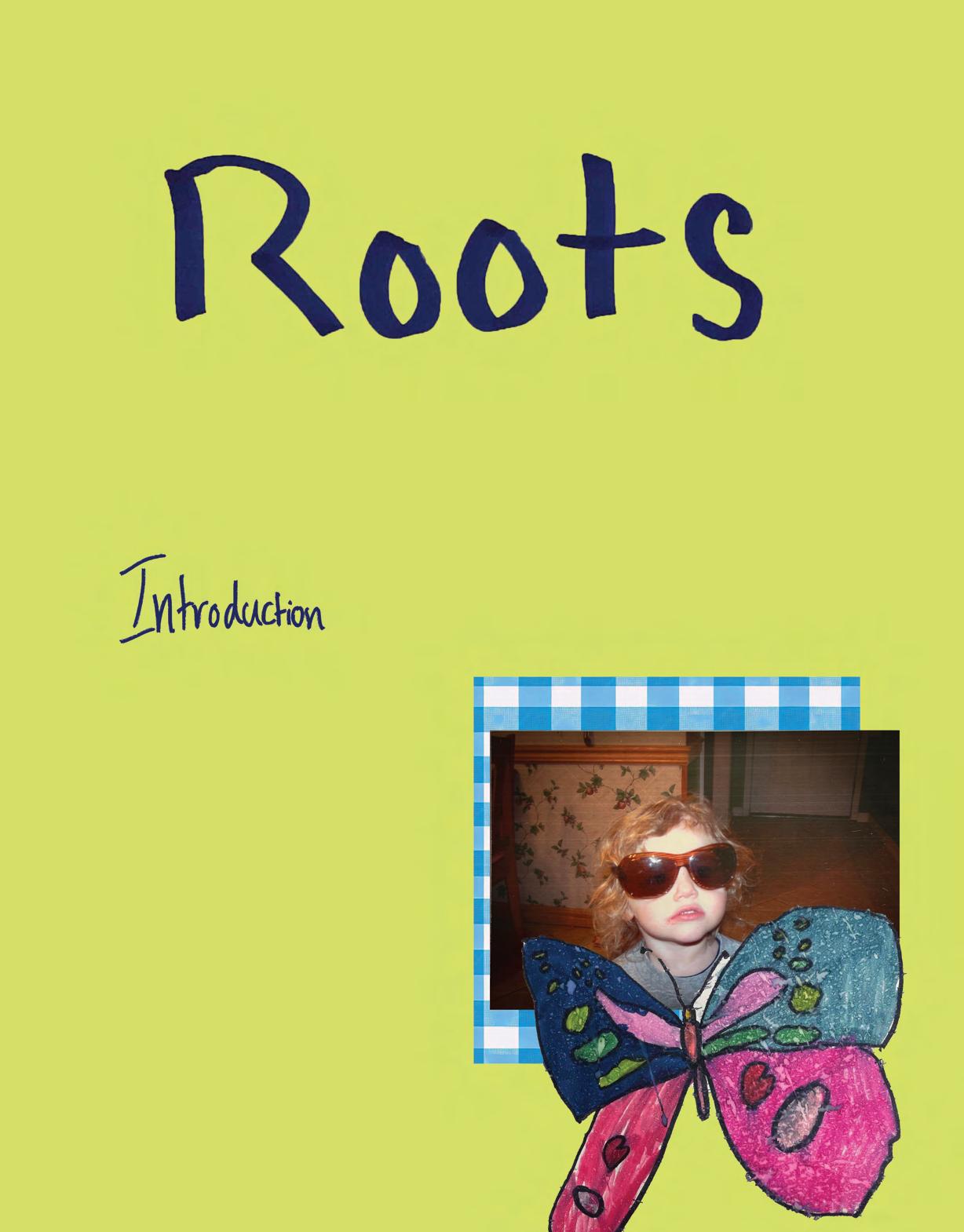
There are so many ways I could start this little adventure. Originally, I had wanted to keep it tidy: each woman gets a section to shine through vague memories of my own. But then they mailed me pictures from my childhood; images of me wrapped in their arms, or out and about, or simply me living my life. I remember going through the gallery and holding back tears. I was so little. Mom, Nina and Gigi were my idols – you could see it in the way I looked at and wrote about them in childhood assignments. That’s when it hit me: they are so much more than the abstractions from my childhood. My little stories are nothing but pebbles in the ocean. So, instead of centering myself, I want to center them – the captivating women that they are.
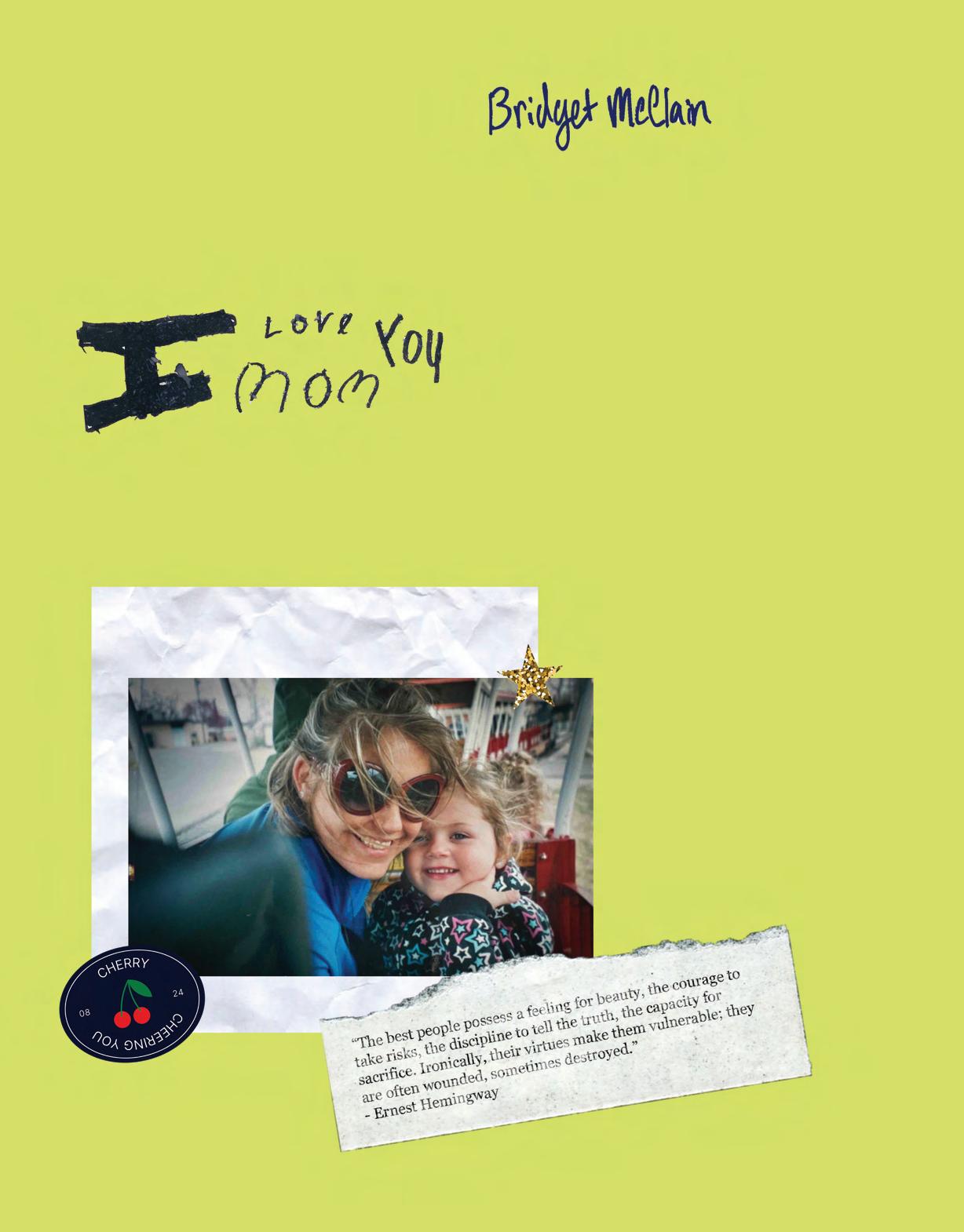
Mom is, and always has been, the most important woman in my life. That happens when it’s just the two of us against the world. She is the warrior who kept me safe, provided for me, made me who I am today – all while she went to college, maintained a social life and went through Hell and back. She is the friendly face who always makes you feel special and offers a lending hand. If she’s not supporting the people around her, she’s decorating and redecorating our eclectic, maximalist home. I am always told I get my writing from my parents, and I cannot argue: she has journals that are decades old, papers from her college years that are stamped with more than just approval, but admiration. She is a consumer of whatever arts she can get her hands on: books, music, movies. I think she could hold a conversation with just about anyone with how much she knows about. Mom is eccentric, enigmatic and an inspiration.
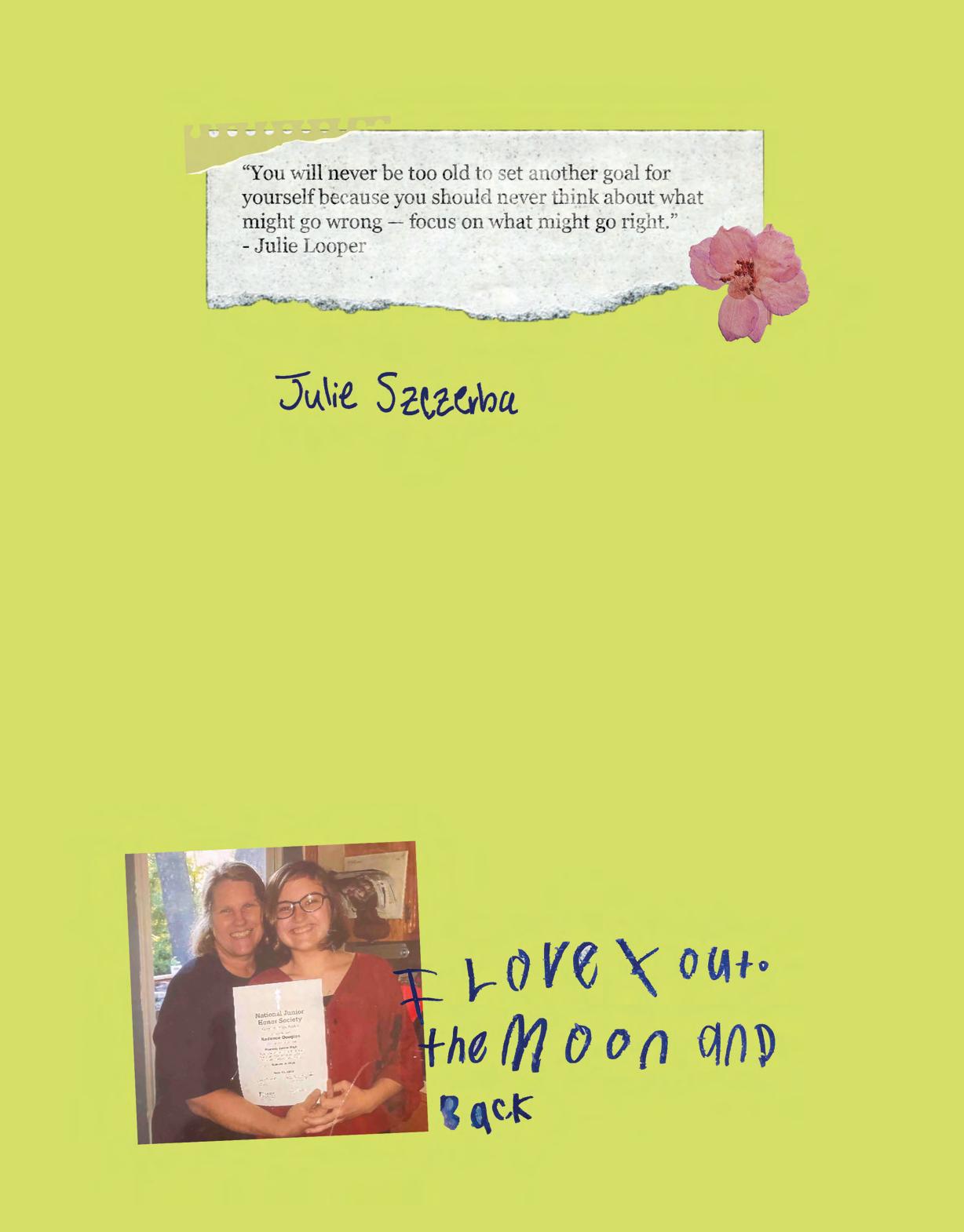
Gigi is the matriarch: hosting every holiday, helping out however she can, making sure everyone is safe and happy. She cooks like a beast and caters to our exuberant family; there is always a meal ready for us, whether it be Christmas, Thanksgiving or just someone’s birthday. She is also the silent giver, always watching to see what her descendants may want or need. Christmas is the best example of her hostess spirit: every year, the family gathers at her house in the morning, ready to open presents and eat the breakfast she made. Everyone receives something, from the youngest grandkid to oldest child. She is the center of the familial unit, always there to lend a hand or give a drive or tell you the hard truth you need to hear. She is nothing if not an honest woman, bridging any gaps that may appear. Gigi is the glue that holds us all together and fills the cracks.
Nina is my best friend – but more than that, she is the backbone of our family. She is fiercely loyal to and protective of us; no matter what we do, she will love and care for us in the hopes that we will rise above. She is kind yet stern; she always champions for empathy, but also advocates for being a right ole bitch if need be. More like a fairy tale grandma than anything, Nina is the woman who spoils her grandkids rotten and does anything she can to help them out. She is the shoulder to cry on, the one who always drops what she’s doing to support someone else. Her favorite kind of music is country: we once listened to her favorite album on a road trip home from California. She knows the greats by heart and always raves about them. Hallmark and ID are her go-to channels – she’s either watching a cheesy romance or a gritty crime show. Going to Nina’s house is a reward, a time to relax and chat with her about your life; maybe even snuggle up with her dogs and watch her shows with her. Nina is the perfect combination of fantasy and reality.

The personalities I wrote about today are so much more than I could ever put into words. They are the impressions they have left on the plentiful people around them. They are the effort they have put into their families, sewing every rip or tear back together and moving on. They are the women who made me who I am today: the ones who supported my dreams of writing and getting a college education. Mom is a beacon of kindness and intelligence; Gigi of hospitality and hard work; and Nina of strength and compassion. If there are figures like these in your life, treasure them as deeply as you can. They deserve every ounce of love that they have put into the world. SL


Silk, embroidered cloth
Passed down from generation to generation
From the south to the west
From the hands that have sewn these sacred garments
Mothers, grandmothers, daughters and their daughter’s will always be adorned with love.

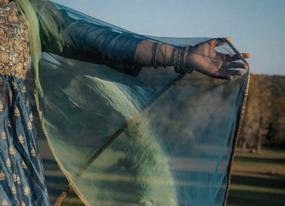
Manisha Muthukaruppan & Rucha Kelkar
Rucha: Cultural attire has become a vibrant extension of how I express myself to the world, embodying both the elegance and tradition that Indian wear represents. I am passionate about donning these beautiful clothes for milestone events like banquets, graduations, and dances, where I feel proud to represent all parts of myself. However, growing up in predominantly white areas, I often found myself drifting away from my cultural roots, hesitant to embrace the beauty of Indian wear. It wasn’t until I grew more confident in my Indian American identity that I began to reclaim these traditions. Now, wearing Indian cultural attire has become a way for me to honor my roots, celebrate my heritage, and proudly share my identity with the world, knowing that each outfit tells a story of culture, pride, and selfacceptance. SL
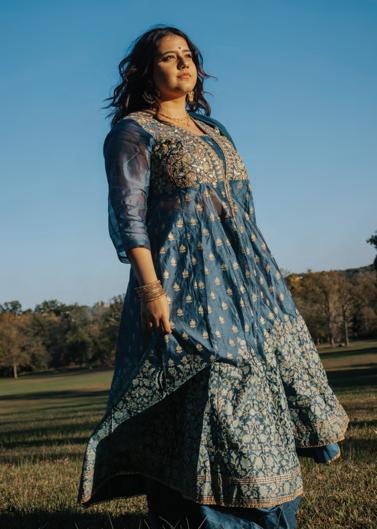





Cover
Photography: Amanda Coppeti
Models: AJ Hanninen,
Amari Branch-Autman, Jacquez Morgan
Styling: Emilee Frasier
Assistants: Daniela Saenz-Quintana,
Madison Marlow, Jordan Davis
Color Pages and Divider
Photography: Amanda Coppeti
Layout: Amanda Coppeti
Letter from the Editor + Table of Contents
Copy: Jordan Davis
Layout: Amanda Coppeti
Staff Line Up
Photography: Amanda Coppeti
Editing: Amanda Coppeti
Layout: Amanda Coppeti
Sina
Writer: Amanda Coppeti
Photographer: Amanda Coppeti
Styling: Emilee Frasier
Layout: Amanda Coppeti
Models: Sofia Ramos, Dafne Gonzalez
Peng Black Girls
Writer: Jordan Davis
Photographer: Shannon Jones
Layout: Shannon Jones
Models: Amaya Adegbuyi, Jabarbara Jennings, Shayla Blissett
How To Put a Bumper Sticker on a Bentley
Writer: Sarah Phillips
Illustrator: Shannon Jones
Assistant: Amanda Coppeti
Layout: Shannon Jones
Models: Shannon Allabaugh, Rilla Patterson,
KaLynn Irey, Jenna Preuss
Everyday Ordinary
Writer: Madison Marlow
Visuals: Olivia Johnson
Layout: Olivia Johnson
The Heartbeat of Flamenco
Writer: Ashlynne Sage
Photographer: Jamie Smallfield
Layout: Jamie Smallfield
Models: Violeta Cuevas
Meant to Be
Photographer: Daniela Saenz-Quintana
Assistant: Madison Marlow
Styling: Emilee Frasier
Layout: Daniela Saenz-Quintana
Models: Jasmine Cooper, Naya Cooper
From the River to the Sea
Writer: Jordan Davis
Visuals: Olivia Johnson
Layout: Olivia Johnson
The Forest From the Trees
Writer: Jo Douglas
Photographer: Daniela Saenz-Quintana
Layout: Daniela Saenz-Quintana
Models: Sophy Poole, Josephine Dalton, Asher Wilson
It’s Probably Fine
Writer: Madison Marlow
Photographer: Jamie Smallfield
Assistant: Daniela Saenz-Quintana
Layout: Jamie Smallfield
Model: Arin Hawk
Roots
Writer: Jo Douglas
Visuals: Emilee Frasier
Layout: Emilee Frasier
Nirvana
Writer: Jordan Davis
Photographer: Amanda Coppeti
Assistant: Ally Ainsleigh
Layout: Amanda Coppeti
Models: Rucha Kelkar, Manisha Muthukaruppan,
Siddhi Goswami, Parul Sahu, Maanasa Vollu
To do something with love, creativity or soul.